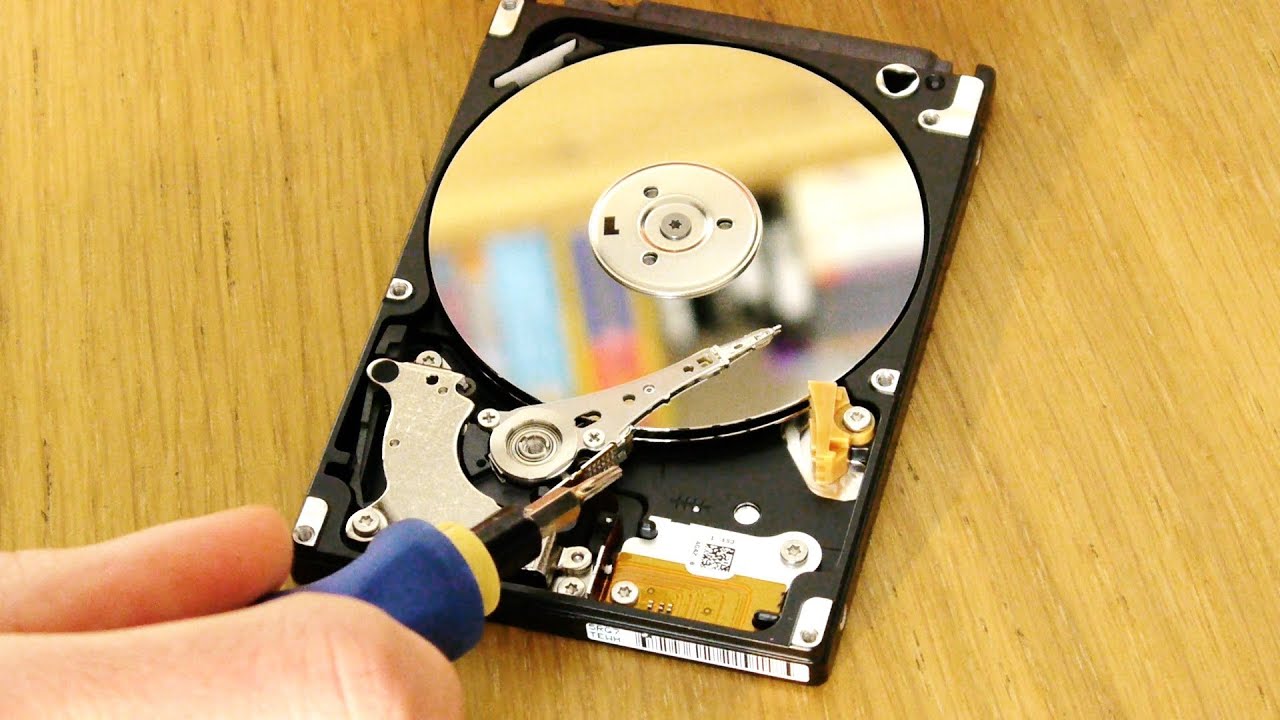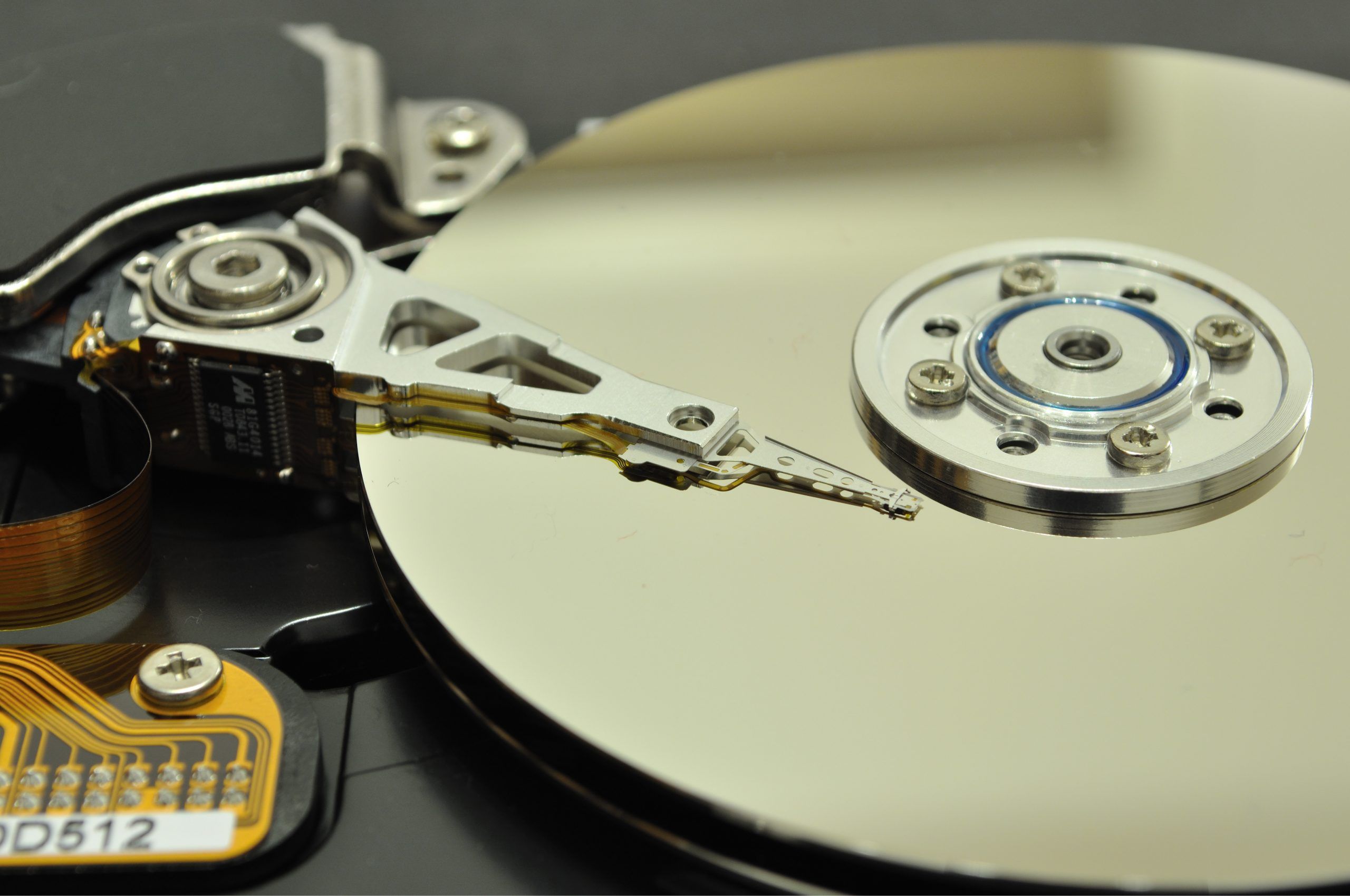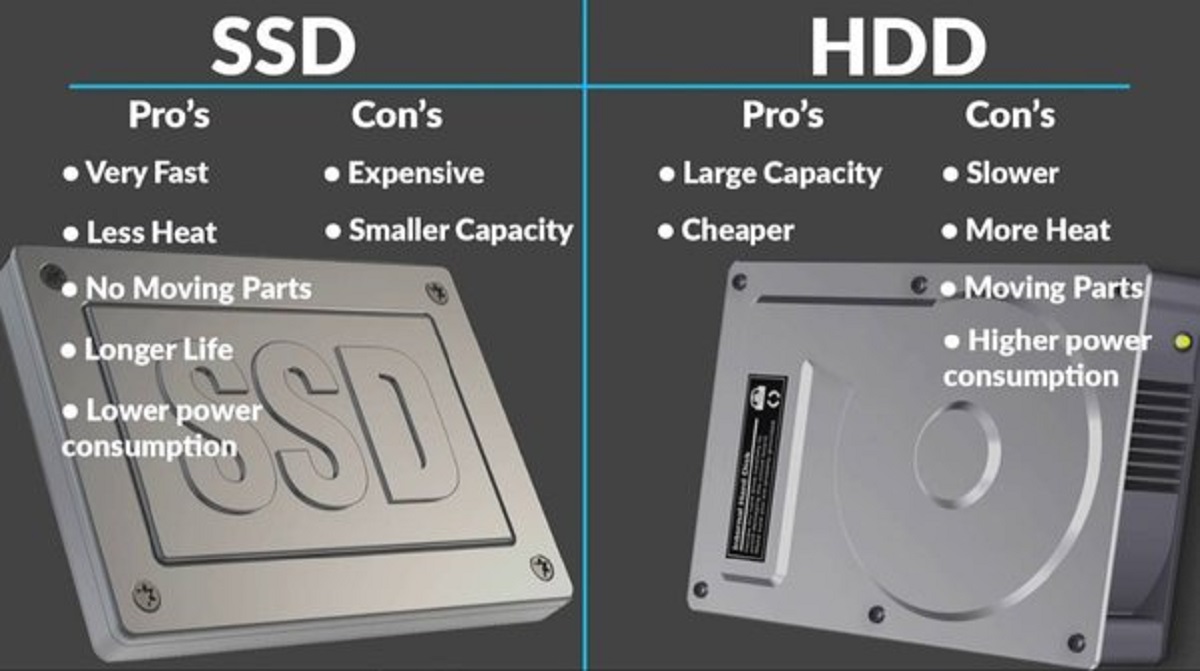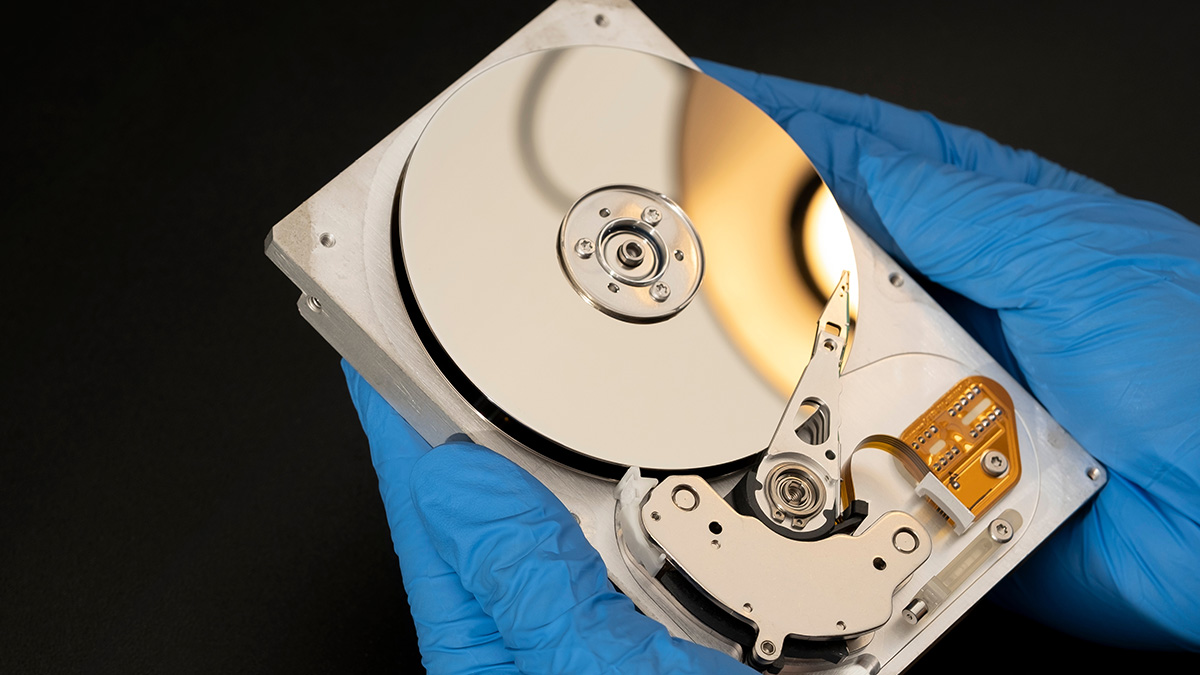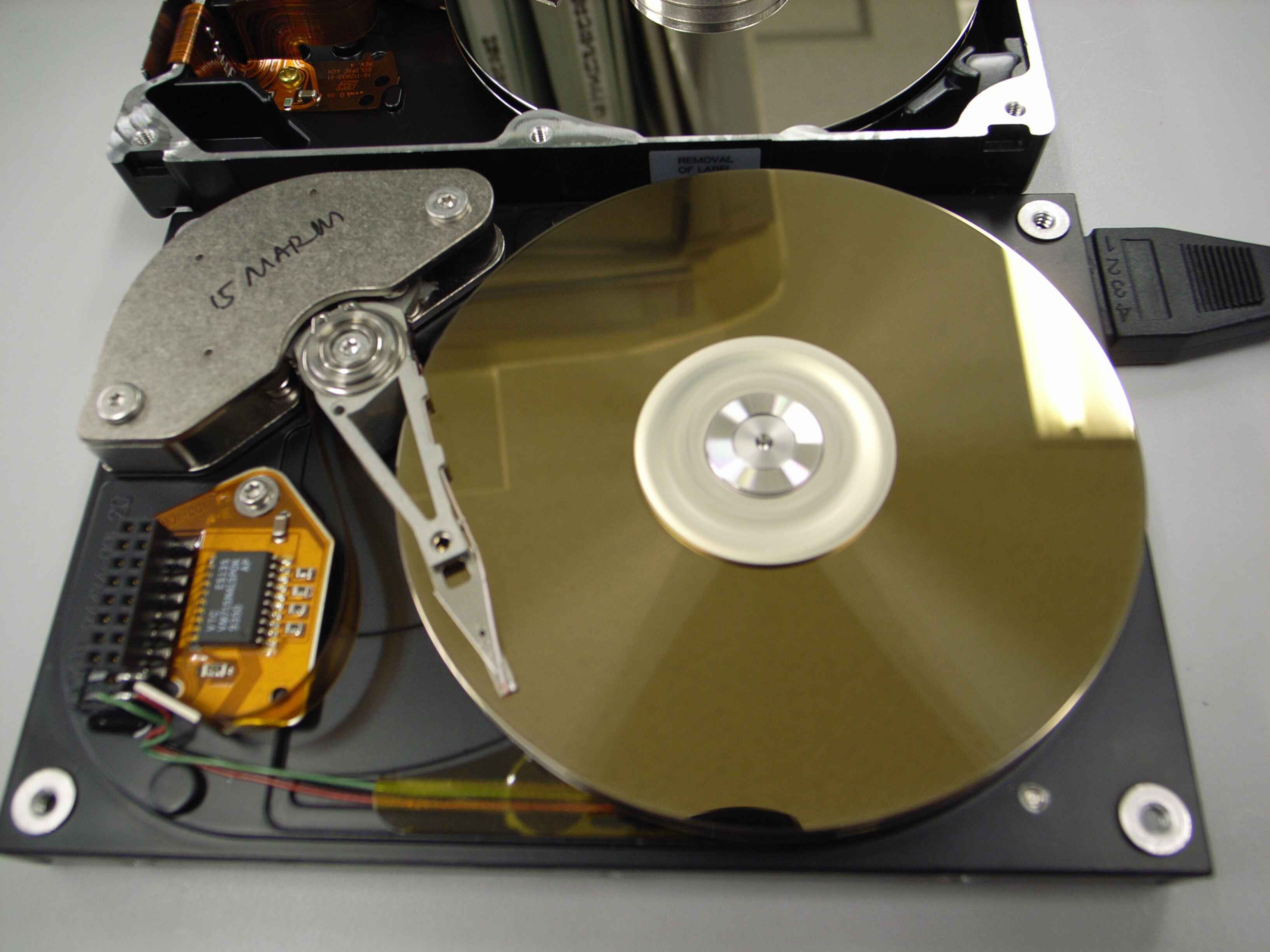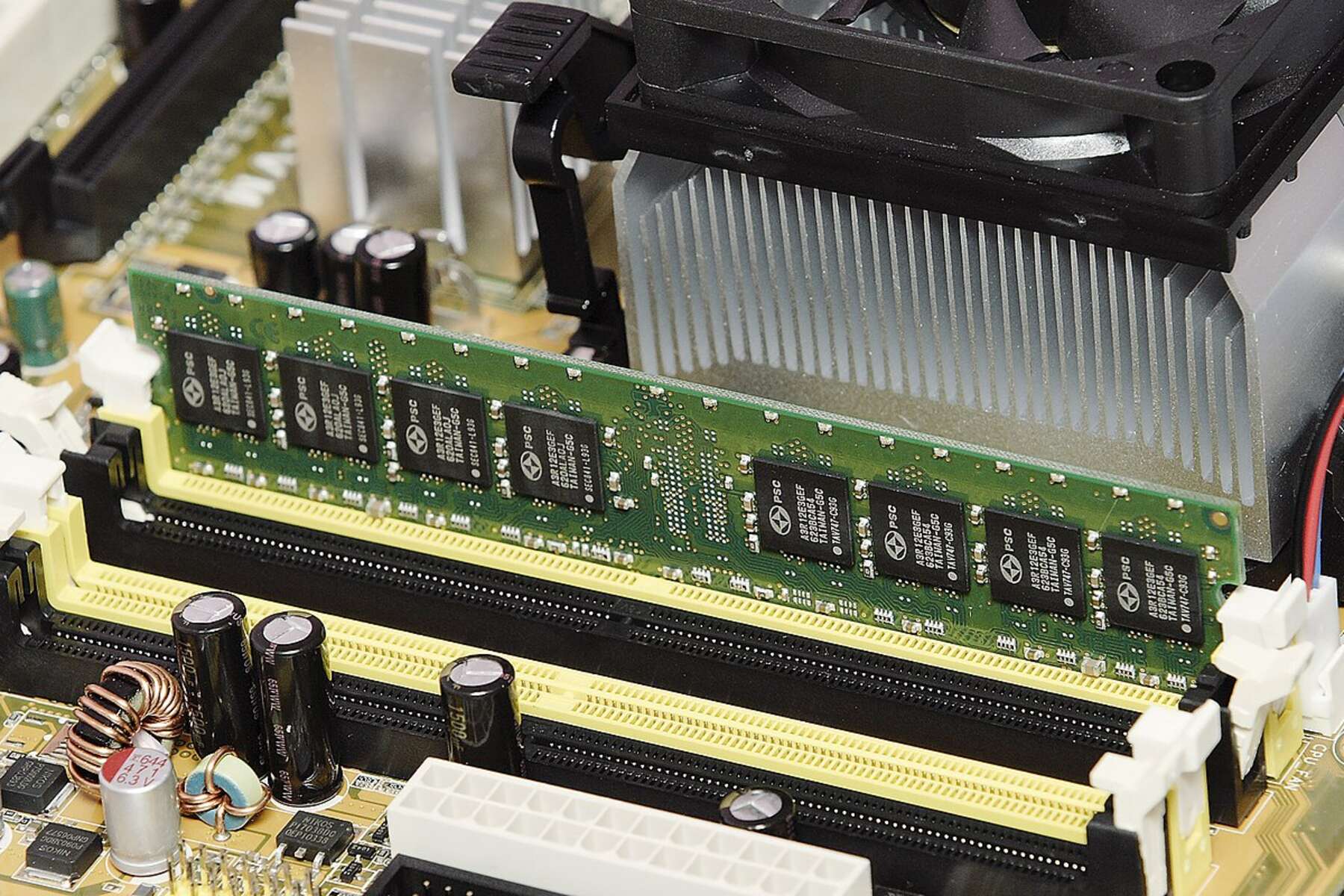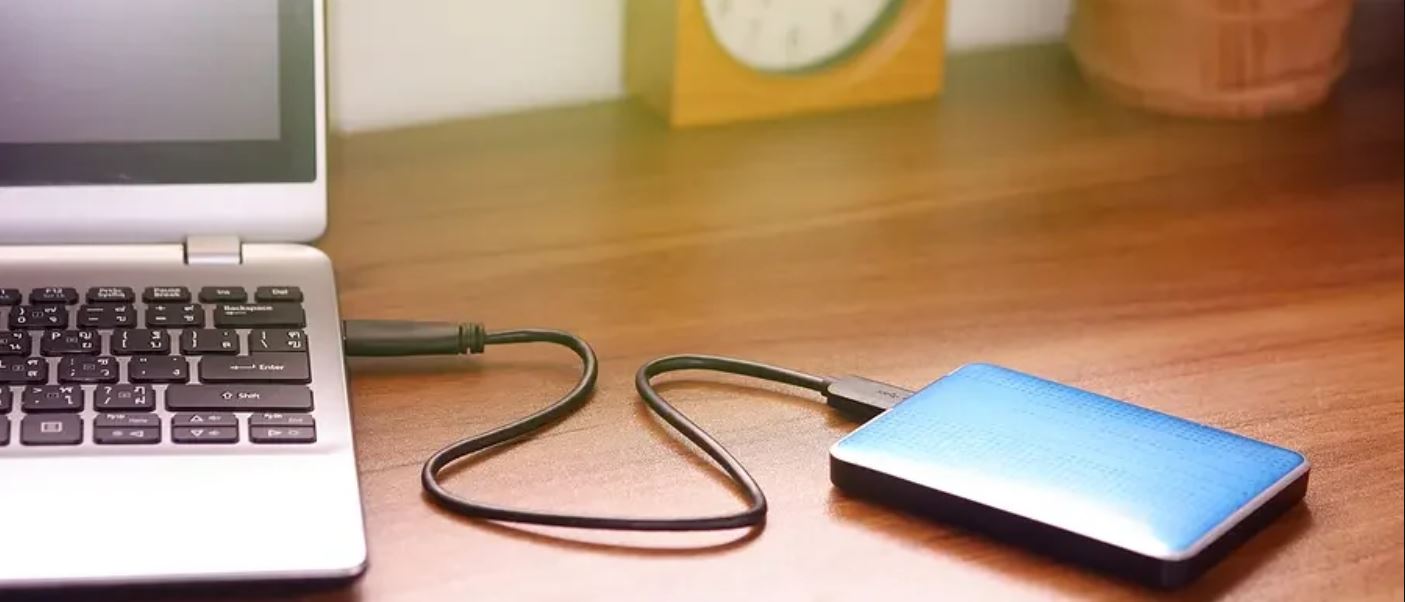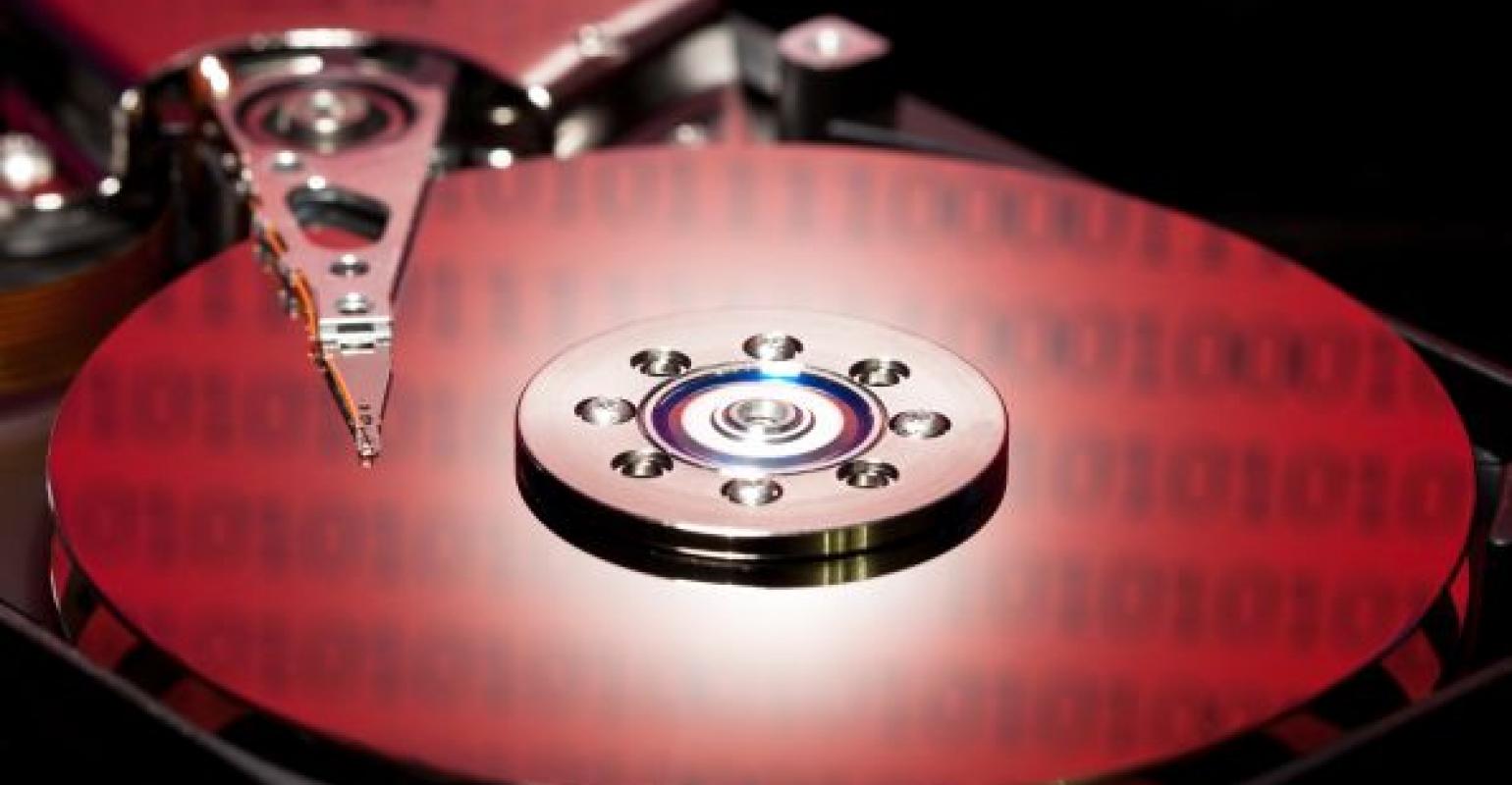Introduction
Welcome to this informative article where we explore the intriguing world of hard disk drives and the problem of stuck headers. In the realm of data storage, hard disk drives (HDDs) have been the go-to option for decades, offering ample space and reliable performance. However, like any intricate machinery, HDDs can face issues that hinder their functionality and compromise the accessibility of stored data. One such problem is the occurrence of stuck headers.
Imagine a scenario where you power up your computer, eagerly anticipating the retrieval of important files or the launch of a favorite application, only to be met with frustration as the system fails to respond. This can be attributed to a malfunctioning hard disk drive header, causing the data retrieval mechanism to become stuck.
Understanding the problem of stuck headers requires a basic understanding of the components that make up a hard disk drive. HDDs consist of several essential parts, including the platters, read/write heads, actuator arm, and controller board. The platters are circular disks coated with a magnetic material that stores the data, while the read/write heads are responsible for reading and writing data on the platters. The actuator arm moves the heads across the platters, allowing data access, while the controller board manages the overall operation of the hard disk drive.
The headers, also known as the read/write heads, play a crucial role in the data retrieval process. These delicate components are mounted on the actuator arm and are responsible for accurately reading and writing data on the platters. When the headers get stuck, they are unable to move freely across the platters, obstructing the functionality of the hard disk drive.
Now that we have covered the basics of HDD components and the role of headers, let us delve into the common causes of stuck headers and the potential consequences they can have on the accessibility and integrity of stored data.
Defining the problem: stuck headers on hard disk drives
A stuck header refers to a situation where the read/write heads of a hard disk drive become immobile or fail to move freely across the platters. This can severely impact the functionality and data accessibility of the hard disk drive.
There are various reasons why headers may become stuck, ranging from mechanical failures to power surges or firmware issues. Mechanical failure often occurs due to physical damage, such as a bent actuator arm or damaged head assembly. Similarly, power surges or sudden disconnections can disrupt the delicate balance of the read/write heads, causing them to get stuck on the platter surface. Additionally, firmware or software issues can also lead to header problems, affecting the ability of the read/write heads to read and write data accurately.
The consequences of stuck headers can be detrimental to both personal and professional users. One of the immediate repercussions is the inaccessibility to stored data. When the headers are stuck, the read/write heads cannot perform their function of retrieving or saving data to the platters. This means that files, documents, photos, and other important information may be off-limits until the issue is resolved.
Furthermore, there is a risk of potential data loss when headers are stuck. If the hard disk drive continues to operate in this state, it may lead to permanent damage to the platter surface. This damage can result in data loss that is irreversible, making file recovery extremely challenging or even impossible.
Moreover, stuck headers can cause damage to other components of the hard disk drive. The continuous strain on the actuator arm and head assembly can lead to further mechanical failures, jeopardizing the overall functionality of the device.
To prevent and resolve the problem of stuck headers, it is essential to understand the underlying causes and employ proper maintenance techniques. The next section will discuss various prevention and troubleshooting tips to safeguard hard disk drives from this issue and ensure data integrity and accessibility.
Understanding the components of a hard disk drive
Before delving deeper into the problem of stuck headers, it is important to have a comprehensive understanding of the different components that make up a hard disk drive (HDD). A hard disk drive is a complex piece of technology that consists of several essential parts working together to store and retrieve data.
The primary components of a hard disk drive include the platters, read/write heads, actuator arm, and controller board. The platters are circular metallic disks coated with a magnetic material. Their purpose is to store the data magnetically. These platters are typically stacked vertically and rotate at a high speed. The read/write heads, also known as headers, are responsible for reading and writing data onto the platters. The headers are attached to an actuator arm, which moves them across the platter surfaces, allowing data access to different parts of the disk. The actuator arm is controlled by a voice coil motor, which positions the headers with accuracy.
The controller board serves as the brain of the hard disk drive, managing the overall operation and communication between the different components. It interprets and executes commands from the computer, allowing data to transfer to and from the platters via the read/write heads. The controller board also manages other important functions, such as error correction and power distribution, ensuring the reliable operation of the hard disk drive.
Each component in a hard disk drive plays a crucial role in its functionality. The platters store the data, the read/write heads retrieve and write data, the actuator arm positions the headers, and the controller board governs the entire process. It is worth noting that the read/write heads are extremely delicate and sensitive, as they need to operate in close proximity to the platter surface without making physical contact. Any disruptions to these components can lead to issues, such as stuck headers, and affect the performance and reliability of the hard disk drive.
Having a clear understanding of these components helps to comprehend how the read/write heads can become stuck and why this situation can have serious implications on data accessibility and integrity. In the following sections, we will explore the common causes of stuck headers and the potential consequences they can have on a hard disk drive.
The role of the headers in a hard disk drive
The headers, also known as the read/write heads, are vital components of a hard disk drive (HDD). Their primary function is to read and write data on the platters, allowing for the storage and retrieval of information. Understanding the role of the headers is crucial for grasping the significance of their proper functioning and the impact of stuck headers on HDD performance.
The headers are mounted on the actuator arm, which is controlled by a voice coil motor. This arrangement enables the headers to move across the surface of the platters without making physical contact. When data needs to be accessed or stored, the actuator arm positions the headers precisely above the desired location on the platters.
During the read operation, the headers read the magnetic signals on the platters and convert them into digital data that can be understood by the computer. This process is accomplished through the use of magnetoresistive or giant magnetoresistive technology, which allows for high-density data reading. The headers must read the data accurately and quickly to ensure the HDD’s performance and the integrity of the stored information.
Likewise, during the write operation, the headers write data onto the platters by altering the magnetic orientation of the particles. This is achieved through the use of electrical currents that induce changes in the magnetization of the platter coating. The ability of the headers to write data accurately and efficiently is crucial for data storage and retrieval processes in the HDD.
The headers, being delicate and sensitive, operate on an extremely minute scale, with distances between the heads and platters measured in nanometers. This proximity is necessary for optimal performance and data accuracy. However, it also means that any disruption or misalignment can cause the headers to get stuck on the platter surfaces, leading to operational issues and potential data loss.
The headers’ role in a hard disk drive is essential for the device’s overall functionality. Their accurate and precise movement, reading, and writing capabilities ensure the proper storage and retrieval of data. When stuck, the headers are unable to perform their tasks effectively, resulting in inaccessibility to stored information, potential data loss, and potential damage to other components of the hard disk drive.
In the next sections, we will explore the common causes of stuck headers and the detrimental consequences they can have on a hard disk drive system.
Common causes of stuck headers
The occurrence of stuck headers in a hard disk drive (HDD) can be attributed to various factors, ranging from mechanical failures to power surges or firmware issues. Understanding these common causes is essential for identifying potential risks and implementing preventive measures. Let’s explore the most frequent reasons why headers may become stuck.
- Mechanical failure: One of the primary reasons for stuck headers is mechanical failure. This can occur due to physical damage to the hard disk drive. For example, if the actuator arm becomes bent or misaligned, it can impede the movement of the headers across the platters. Similarly, a damaged head assembly can cause the headers to get stuck, hindering their ability to read and write data accurately.
- Power surges or sudden disconnections: Another common cause of stuck headers is power surges or sudden disconnections. Electrical abnormalities, such as power spikes or surges, can disrupt the delicate balance of the read/write heads, causing them to get lodged on the platter surface. Similarly, if the hard disk drive is abruptly disconnected from the power source while in operation, the sudden halt can lead to the headers becoming stuck.
- Firmware or software issues: Problems with the firmware or software of the hard disk drive can also result in stuck headers. Firmware is the built-in software that controls the operation and functionality of the HDD. If the firmware becomes corrupt or outdated, it can cause errors in the movement of the actuator arm and headers, leading to their immobilization. Similarly, software issues on the computer, such as driver conflicts or compatibility problems, can impact the performance of the HDD and cause the headers to become stuck.
It is crucial to address these common causes promptly to prevent the occurrence of stuck headers and mitigate the risks associated with them. The next sections will delve into the consequences of stuck headers and provide prevention and troubleshooting tips to safeguard the performance and integrity of your hard disk drive.
Mechanical failure
Mechanical failure is one of the leading causes of stuck headers in a hard disk drive (HDD). This type of failure typically occurs due to physical damage to the internal components of the drive. When the headers become stuck, it can severely impact the functionality and performance of the HDD, leading to data inaccessibility and potential data loss.
There are several ways in which mechanical failure can contribute to the occurrence of stuck headers. One common cause is a bent or misaligned actuator arm. The actuator arm is responsible for moving the read/write heads across the surface of the platters. If the arm becomes bent or misaligned due to improper handling or a physical shock, it can obstruct the movement of the headers and cause them to get stuck in one position.
A damaged head assembly is another mechanical issue that can result in stuck headers. The head assembly consists of the read/write heads and the attached mechanisms for positioning and movement. If any part of the head assembly becomes damaged or worn out, it can prevent the headers from moving freely or properly contacting the platter surface.
When mechanical failure occurs and the headers become stuck, it can have severe consequences for the HDD. Firstly, data stored on the drive may become inaccessible. This can be frustrating for users who rely on the HDD for storing important documents, files, or personal data.
Moreover, continued attempts to access the stuck headers can cause additional damage to the platter surface. The delicate balance between the headers and the platters is crucial for proper data reading and writing. If the headers are stuck and are unable to glide smoothly over the platter surface, they can scratch or damage the magnetic coating, resulting in potential data loss that may be permanent and irretrievable.
To prevent mechanical failure and the occurrence of stuck headers, it is crucial to handle hard disk drives with care. Avoid subjecting the drives to physical shocks or impacts and store them in a secure and stable environment. Regular maintenance and inspection of HDDs are also essential to identify any signs of mechanical wear or damage early on.
In the next section, we will explore another common cause of stuck headers: power surges or sudden disconnections and their potential consequences on the HDD.
Power surges or sudden disconnections
Power surges or sudden disconnections can be another significant cause of stuck headers in a hard disk drive (HDD). Electrical abnormalities or interruptions in power supply can disrupt the delicate balance of the read/write heads, leading to their immobility and potential damage.
Power surges occur when there is a sudden increase in electrical voltage. This can happen due to lightning strikes, faulty power sources, or electrical equipment malfunctions. When a power surge occurs, it can overload the delicate components of the HDD, including the headers. The sudden increase in electrical current can cause the headers to get stuck on the platter surface, obstructing their movement and compromising the functionality of the HDD.
Similarly, sudden disconnections of the power supply to the HDD can also cause the headers to become stuck. If the hard disk drive is abruptly disconnected while it is in operation, such as during a system shutdown or a loose power connection, it can interrupt the proper movement of the headers. When the power supply is suddenly cut off, the headers may not have enough time to retract or park safely, leading to their immobility and potential damage.
The consequences of power surges or sudden disconnections resulting in stuck headers can be severe. Firstly, the inability to access data stored on the HDD can disrupt workflow, hamper productivity, and cause inconvenience for both personal and professional users. Important files, documents, and critical information may become temporarily or permanently inaccessible until the issue is resolved.
Furthermore, prolonged attempts to access the stuck headers can lead to additional damage to the hard disk drive. The delicate relationship between the headers and the platters can be jeopardized, potentially resulting in scratches or physical damage to the magnetic coating on the platter surface. This damage can further impact the integrity of the stored data, potentially leading to data loss that may be challenging or impossible to recover.
To mitigate the risks associated with power surges and sudden disconnections, it is crucial to use reliable and stable power sources. Investing in surge protectors or uninterruptible power supply (UPS) systems can help safeguard the HDD from unexpected electrical fluctuations. Properly connecting and securing power cables can also minimize the chances of sudden disconnections.
In the next section, we will explore the third common cause of stuck headers: firmware or software issues, and their potential impact on the performance of the hard disk drive.
Firmware or software issues
Firmware and software issues can contribute to the occurrence of stuck headers in a hard disk drive (HDD), affecting the overall performance and functionality of the device. Firmware refers to the built-in software that controls the operations of the HDD, while software refers to the computer programs that interact with the HDD. Problems with firmware or software can disrupt the movement and functionality of the headers, leading to their immobility and potential data loss.
Firmware issues can arise due to various factors, such as outdated firmware, corrupted firmware, or compatibility issues. If the firmware is outdated, it may lack bug fixes or improvements that can affect the proper functioning of the HDD’s components, including the headers. Corruption of the firmware can occur due to software or hardware malfunctions, leading to errors in the instructions given to the headers. Compatibility issues between the firmware and the computer’s operating system or other software installed on the system can also impact the performance of the HDD.
Software issues on the computer itself can also contribute to the occurrence of stuck headers. For example, conflicts between drivers or software applications can disrupt the communication between the computer and the HDD, leading to errors in the movement of the headers. Incompatibility between the software and firmware can also cause issues, hindering the proper functioning of the headers.
The consequences of firmware or software issues resulting in stuck headers can be significant. Firstly, the HDD may become inaccessible, preventing the retrieval of stored data. This can be particularly problematic for users who rely on the HDD for important files, documents, or sensitive information.
Additionally, continued attempts to access the stuck headers can lead to further damage to the hard disk drive. The repeated strain on the headers and the platter surface can cause additional wear and tear, potentially resulting in permanent damage. This damage can further exacerbate the data loss and complicate any attempts at data recovery.
To prevent firmware or software issues from causing stuck headers, it is essential to regularly update the firmware of the HDD. Manufacturers often release firmware updates that address known issues or improve the performance and compatibility of the drive. Ensuring that the computer’s operating system and software are up-to-date can also help avoid conflicts or compatibility issues that can impact the HDD’s functionality.
In the following sections, we will explore the potential consequences of stuck headers and provide prevention and troubleshooting tips to safeguard the performance and integrity of your hard disk drive.
Consequences of stuck headers
Stuck headers in a hard disk drive (HDD) can have significant consequences for data accessibility, integrity, and the overall performance of the device. When the read/write heads become immobilized or fail to move freely across the platters, the following consequences can occur:
- Inaccessibility to stored data: One of the immediate consequences of stuck headers is the inaccessibility to the data stored on the HDD. The read/write heads are responsible for retrieving and writing data onto the platters. When they become stuck, it impedes the HDD’s ability to retrieve or save data. This can be extremely frustrating for users who rely on the HDD for important files, documents, or critical information.
- Potential data loss: Continued attempts to access the stuck headers can lead to potential data loss. The prolonged strain on the headers and the platter surface can cause scratches or damage to the magnetic coating. As a result, the stored data on the affected portions of the platter may become permanently lost or corrupted. Data recovery in such cases can be challenging or even impossible, leading to irretrievable data loss.
- Damage to the platter and other components: Stuck headers can also result in damage to other components of the hard disk drive. The immobilized headers put strain on the actuator arm and other moving parts, increasing the risk of further mechanical failures. The continuous attempts to move the stuck headers can cause physical damage to the platter surface, leading to potential data loss and deteriorating performance of the HDD.
The consequences of stuck headers highlight the importance of promptly addressing this issue to prevent further damage and minimize the risk of data loss. In the next sections, we will provide prevention and troubleshooting tips to help safeguard your hard disk drive from the occurrence of stuck headers and maintain the integrity of your data.
Inaccessibility to stored data
One of the immediate and significant consequences of stuck headers in a hard disk drive (HDD) is the inaccessibility to the data stored on the drive. The read/write heads, which are responsible for retrieving and writing data on the platters, are unable to perform their functions when they become stuck. As a result, users may experience difficulties accessing their important files, documents, or critical information.
Data inaccessibility can have significant ramifications for both personal and professional users. Imagine being unable to retrieve your important work documents, financial records, or personal photos. This can be highly frustrating and may disrupt workflow, hinder productivity, or even cause financial loss in a business setting.
The inaccessibility of stored data can have a wide range of impacts depending on the nature and importance of the data. For individuals, it may result in the loss of cherished memories and irreplaceable files. For businesses, it may lead to operational disruptions, delayed projects, loss of valuable customer data, and potential legal issues.
Furthermore, inaccessibility to stored data can impede data recovery efforts. If stuck headers prevent the proper functioning of the HDD, it may be difficult to retrieve data using traditional data recovery methods. This can increase the complexity and cost of data recovery procedures, especially if specialized services are required.
To mitigate the consequences of inaccessibility to stored data caused by stuck headers, it is crucial to address the issue promptly. Seeking professional assistance from data recovery specialists can provide the expertise and tools needed to safely recover the data. It is important to refrain from attempting DIY solutions or using unreliable software, as these measures can potentially worsen the situation and lead to permanent data loss.
Prevention is key in ensuring data accessibility. Regularly backing up important files and data to external storage devices or cloud services can serve as a safeguard against data loss. Implementing proper data management practices, such as organizing files and regularly reviewing and updating backup mechanisms, can help minimize the impact of stuck headers or other HDD failures.
In the next section, we will discuss the potential consequences of stuck headers: the risk of potential data loss and the importance of data integrity.
Potential data loss
Stuck headers in a hard disk drive (HDD) can pose a significant risk of potential data loss. When the read/write heads become immobile or fail to move freely across the platters, there is a possibility of permanent damage to the stored data, leading to data loss that may be challenging or impossible to recover.
The risk of data loss arises from the potential damage that can be caused to the platter surface when the headers are stuck. The delicate balance between the headers and the platters is crucial for the accurate reading and writing of data. If the headers are unable to glide smoothly over the platter surface due to being stuck, they can scratch or damage the magnetic coating.
The damage to the platter surface can occur in localized areas, affecting the specific regions where the headers were stuck, or it can spread across the surface, potentially impacting a larger portion of the HDD. This damage can result in permanent loss or corruption of the data stored on the affected sections of the platter.
The extent of the potential data loss depends on various factors, including the duration of the headers being stuck, the severity of the damage to the platter surface, and the nature and importance of the data stored. Critical files, important documents, and cherished memories may be irreversibly lost if the headers remain stuck for an extended period or if more extensive damage occurs.
Attempting to access the data on an HDD with stuck headers can exacerbate the risk of data loss. Continued operations in this state can worsen the damage to the platter surface and make data recovery more challenging or even impossible. It is crucial to cease any attempts at accessing the data and seek professional assistance from data recovery specialists to maximize the chances of successful data retrieval.
To mitigate the risk of potential data loss caused by stuck headers, implementing regular backup practices is essential. Regularly backing up important files, documents, and other critical data to external storage devices or secure cloud services can ensure redundancy and create a reliable copy of the information. This way, even if data loss occurs on the HDD, a recent backup can be used to restore the lost data.
Remember, prevention is always better than cure. Taking proactive measures, such as regularly maintaining and monitoring the health of your HDD, can help identify any potential issues and address them before they lead to stuck headers or data loss.
In the next section, we will explore another consequence of stuck headers: the potential damage to the platter and other components of the HDD and its implications on overall performance.
Damage to the platter and other components
Stuck headers in a hard disk drive (HDD) can lead to potential damage not only to the headers themselves but also to other critical components of the device, including the platter and the actuator arm. This damage can have severe implications for the overall performance and functionality of the HDD.
When the headers are stuck and unable to move freely across the platter surface, it puts strain on the actuator arm and other moving parts of the HDD. The continued attempts to access the stuck headers can lead to excessive wear and tear on these components, increasing the risk of further mechanical failures.
The platter, which is a key component of the HDD, is particularly vulnerable to damage when the headers are stuck. The platter’s surface is coated with a magnetic material where data is stored. When the headers become immobilized, they may come into contact with the platter surface, causing scratches or physical damage to the delicate magnetic coating. This damage can result in data loss or corruption in the affected areas of the platter.
The extent of the damage to the platter and other components depends on various factors, including the duration of the headers being stuck, the severity of the immobility, and the specific circumstances of the mechanical failure. If left unresolved, the damage can spread and impact a larger portion of the HDD, putting more data at risk of permanent loss.
The potential damage to the platter and other components can lead to a significant decline in the overall performance of the HDD. It can cause issues such as reduced read/write speeds, increased latency, and system crashes. Moreover, the risk of further mechanical failures increases, which can result in a complete HDD malfunction and complete data loss.
To mitigate the damage to the platter and other components caused by stuck headers, it is essential to address the issue as soon as possible. Seeking professional assistance from HDD repair specialists can help minimize the risk of further damage and increase the chances of data recovery. It is crucial to avoid attempting DIY solutions or using unreliable software, as these measures can potentially exacerbate the situation and worsen the damage.
Regular maintenance and monitoring of the HDD’s health is also important in preventing damage to the components. Keeping the HDD in a stable and secure environment, free from physical shocks or excessive vibration, can help preserve its functionality and extend its lifespan. Additionally, monitoring for any signs of unusual noises, slow performance, or other indications of HDD issues can prompt early detection and intervention.
In the next sections, we will provide prevention and troubleshooting tips to help safeguard the performance and integrity of your hard disk drive from stuck headers and associated consequences.
Prevention and troubleshooting tips for stuck headers
Preventing stuck headers in a hard disk drive (HDD) is crucial for maintaining the performance and integrity of the device. By implementing preventive measures and knowing how to troubleshoot, you can minimize the risk of stuck headers and mitigate potential consequences. Here are some helpful tips to consider:
- Proper handling and storage of HDD: Ensure that you handle HDDs with care, avoiding any physical shocks or jarring movements. When transporting or storing an HDD, it is important to use proper packaging and protective materials to prevent damage. Avoid exposing HDDs to extreme temperatures or humidity, as these conditions can adversely affect their performance.
- Using a reliable power source: Use a stable and reliable power source for your HDD to minimize the risk of power surges or sudden disconnections. Consider investing in a surge protector or an uninterruptible power supply (UPS) to provide additional protection against electrical fluctuations.
- Regularly updating firmware and software: Keep the firmware of the HDD up to date by checking for any available updates from the manufacturer’s website. This helps ensure that the HDD’s firmware has the latest bug fixes and improvements to enhance its performance and compatibility. Additionally, keep the operating system and other software on your computer updated to maintain compatibility with the HDD.
- Implementing regular maintenance: Regularly inspect your HDD for any signs of physical damage or wear. If you notice any unusual noises, vibrations, or performance slowdowns, seek professional assistance to address the issue promptly. Consider scheduling regular maintenance checks with professionals to ensure the optimal functionality of the HDD.
- Backing up data regularly: Implement a regular backup strategy to ensure that your important files and data are securely stored elsewhere. Backing up data to external storage devices or cloud services significantly reduces the risk of data loss in case of HDD failures, including stuck headers. Regularly test and verify the integrity of your backups to ensure they are ready for use if needed.
In the event that you suspect stuck headers or encounter difficulties accessing your data, it is important to seek professional assistance from experts in HDD repair and data recovery. Attempting DIY solutions or using unreliable software can worsen the situation and increase the risk of permanent data loss.
Remember, prevention is always better than troubleshooting. By implementing these preventive measures and regularly maintaining your HDD, you can minimize the likelihood of stuck headers and ensure the longevity and reliability of your data storage device.
In the final section, we will summarize the key points discussed and emphasize the importance of adopting these preventive measures to safeguard your hard disk drive.
Proper handling and storage of hard disk drives
Proper handling and storage of hard disk drives (HDDs) are vital to ensure their optimal performance and longevity. By following best practices, you can minimize the risk of physical damage and potential issues such as stuck headers. Here are some important tips for proper handling and storage of HDDs:
- Avoid physical shocks and impacts: HDDs are sensitive to physical shocks. Handle them with care, avoiding any sudden jolts or drops. When transporting an HDD, ensure it is secured in a protective case or packaging to minimize the risk of damage from accidental bumps or impacts.
- Stable and level storage environment: Store HDDs in a stable and level environment to maintain their proper functionality. Avoid placing them in areas prone to excessive vibration or movement. Stable shelves or storage cabinets are ideal for minimizing the risk of physical stress on the HDD components.
- Avoid extreme temperatures and humidity: Exposure to extreme heat or cold temperatures can negatively impact the performance of HDDs. It is crucial to store them in an environment with a temperature range that complies with the manufacturer’s recommendations. Additionally, avoid exposing HDDs to high humidity levels, as moisture can cause damage to the sensitive internal components.
- Proper grounding and static precautions: Static electricity can pose a significant threat to HDDs. Before handling an HDD, ensure you are properly grounded by touching a grounded object or wearing an anti-static wrist strap. Additionally, avoid working on carpets or other static-prone surfaces when handling HDDs.
- Protective packaging during transportation: When transporting HDDs, use proper packaging materials to protect them from potential damage. Anti-static bags or cases specifically designed for HDDs can offer an additional layer of protection against static electricity and physical shocks. Avoid placing heavy objects on top of HDDs during transportation.
By following these best practices, you can minimize the risk of physical damage to HDDs and potential issues such as stuck headers. Proper handling and storage not only preserve the longevity of the HDD but also safeguard the integrity of your important data stored within it.
Remember, prevention is key when it comes to maintaining the optimal performance of your HDD. By taking the necessary precautions and adhering to these guidelines, you can ensure the reliability and functionality of your HDD, ultimately safeguarding your valuable data.
In the final section, we will provide a brief summary of the key points covered and reiterate the importance of proper handling and storage of HDDs for preventing issues like stuck headers.
Using a reliable power source
Using a reliable power source is crucial for preserving the performance and integrity of your hard disk drives (HDDs). Unstable power supply or power surges can lead to issues such as stuck headers, which can result in data inaccessibility or potential data loss. By following these tips, you can minimize the risk of power-related problems and ensure the smooth operation of your HDDs:
- Stable power supply: Connect your HDDs to a stable and reliable power source. Use power outlets that are grounded and avoid plugging them into overloaded power strips or extension cords. A continuous and stable power supply reduces the risk of sudden disruptions and voltage fluctuations that can impact the functionality of the HDD.
- Surge protection: Power surges can occur due to lightning strikes, electrical grid fluctuations, or faulty equipment. Implement surge protection devices, such as surge protectors or uninterruptible power supply (UPS) systems, to safeguard your HDDs against sudden voltage spikes. These devices regulate the flow of electricity and provide protection against power surges.
- Proper shutdown procedures: When shutting down your computer or disconnecting the HDD, follow proper procedures to avoid sudden power loss. Allow the operating system to shut down completely before turning off the power supply or unplugging the HDD. Abrupt power disconnections can result in damage to the HDD’s components, including the headers.
- Regular maintenance: Periodically inspect the power cables and connections of your HDDs for any signs of damage or wear. Loose or frayed power cables can lead to intermittent power supply issues or poor contact, which can affect the performance of the HDD. Replace any faulty cables promptly to ensure a reliable power connection.
- Power conditioning: Consider using power conditioning devices or voltage regulators to ensure a consistent and stable power supply to your HDDs. These devices regulate the voltage and filter out electrical noise, providing a clean and reliable power source for your HDDs.
By utilizing a reliable power source and implementing these precautionary measures, you can minimize the risk of issues such as stuck headers and ensure the uninterrupted operation of your HDDs. A stable power supply will help maintain the integrity of your data and prolong the lifespan of your HDDs.
It is essential to prioritize the proper power supply and take the necessary steps to protect your HDDs from power-related problems. By doing so, you can ensure the reliability and longevity of your HDDs, safeguarding your valuable data stored within them.
In the final section, we will provide a brief summary of the key points covered and emphasize the importance of using a reliable power source for the optimal performance of your HDDs.
Regularly updating firmware and software
Regularly updating the firmware and software of your hard disk drives (HDDs) is essential for maintaining their optimal performance and functionality. Firmware updates are released by HDD manufacturers to address bugs, improve compatibility, and introduce enhancements. Similarly, updating the software on your computer helps ensure proper communication between the operating system and the HDD. By following these tips, you can minimize the risk of issues like stuck headers and maximize the reliability of your HDDs:
- Check for firmware updates: Visit the manufacturer’s website regularly to check for firmware updates specific to your HDD model. Firmware updates often include performance optimizations, bug fixes, and improvements to the HDD’s functionality. Updating the firmware can help mitigate potential issues that may lead to stuck headers and ensure compatibility with the latest software and hardware technologies.
- Follow manufacturer’s instructions: When updating the firmware, carefully follow the manufacturer’s instructions to ensure a smooth and successful process. Some manufacturers provide firmware update utility tools that simplify the update process. Ensure that your HDD is adequately powered during the firmware update, and avoid interrupting the process to prevent potential firmware corruption or malfunction.
- Keep the operating system up to date: Regularly update your computer’s operating system to ensure it is running the latest software version. Operating system updates often include security patches, bug fixes, and performance enhancements that can optimize the communication and compatibility between the HDD and the computer. This helps minimize potential software-related issues that could affect the performance of the HDD, including the occurrence of stuck headers.
- Update device drivers: Ensure that all device drivers on your computer, including those specific to the HDD, are up to date. Device driver updates can improve the functionality and performance of the HDD by resolving compatibility issues and providing optimal communication between the hardware and software components.
- Be cautious with third-party software: When installing third-party software on your computer, exercise caution and ensure that it is from reputable sources. Poorly developed or incompatible software can cause conflicts, leading to issues with the HDD’s performance. Only install software that is trusted and known to be compatible with your computer’s operating system and HDD model.
Regularly updating the firmware and software of your HDDs helps keep them running smoothly and minimizes the risk of issues such as stuck headers. By doing so, you can ensure optimal compatibility, improve performance, and enhance the overall reliability of your HDDs.
Remember, prevention is key in maintaining the health of your HDDs. By regularly updating firmware and software, you can stay on top of any potential issues, benefit from performance improvements, and mitigate risks that could impact the functionality of your HDDs.
In the final section, we will provide a brief summary of the key points covered and emphasize the significance of regular firmware and software updates for the overall performance and longevity of your HDDs.
Conclusion
In this comprehensive article, we have explored the problem of stuck headers in hard disk drives (HDDs) and discussed various preventive measures and troubleshooting tips to address this issue. Stuck headers can have severe consequences, such as data inaccessibility, potential data loss, and damage to the platter and other components of the HDD. By implementing the following strategies, you can minimize the risk of stuck headers and preserve the integrity and performance of your HDD:
- Handle and store HDDs properly to avoid physical damage and shocks.
- Use a reliable power source to prevent power surges or sudden disconnections.
- Regularly update the firmware of your HDD and keep your computer’s software up to date.
- Take proactive steps to prevent stuck headers, such as regular maintenance and backups.
By following these best practices, you can mitigate the potential consequences of stuck headers and ensure the optimal functionality of your HDDs. Remember, prevention is key, and taking proactive measures can help minimize the risk of data loss, maintain data accessibility, and prolong the lifespan of your HDDs.
In the ever-evolving world of technology, it is crucial to stay vigilant and informed about the latest best practices and updates for HDD maintenance. By staying proactive and implementing the tips provided in this article, you can safeguard your valuable data and maintain a reliable and efficient storage system for years to come.
We hope that the information provided in this article has equipped you with the necessary knowledge and understanding to address the problem of stuck headers effectively. Remember, when in doubt or encountering persistent issues, it is always recommended to seek professional assistance for accurate diagnosis and resolution.







